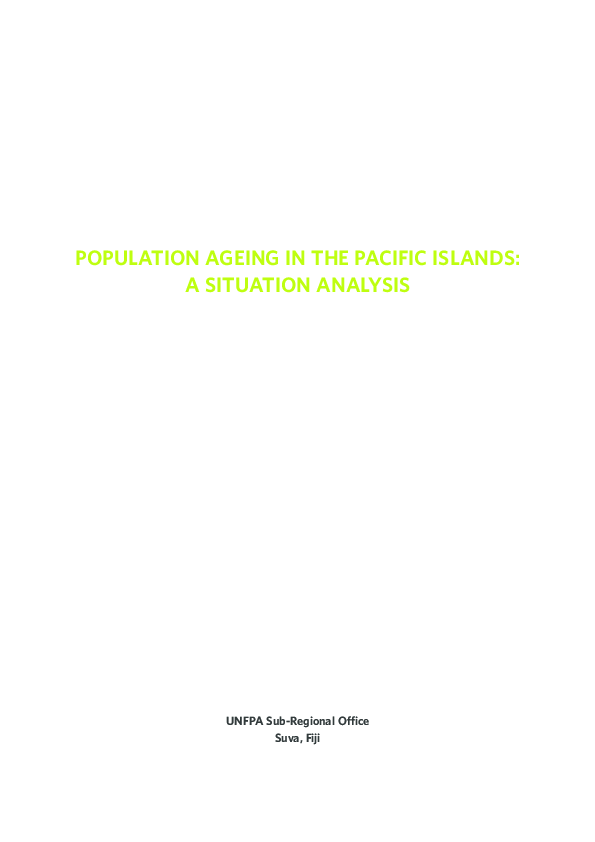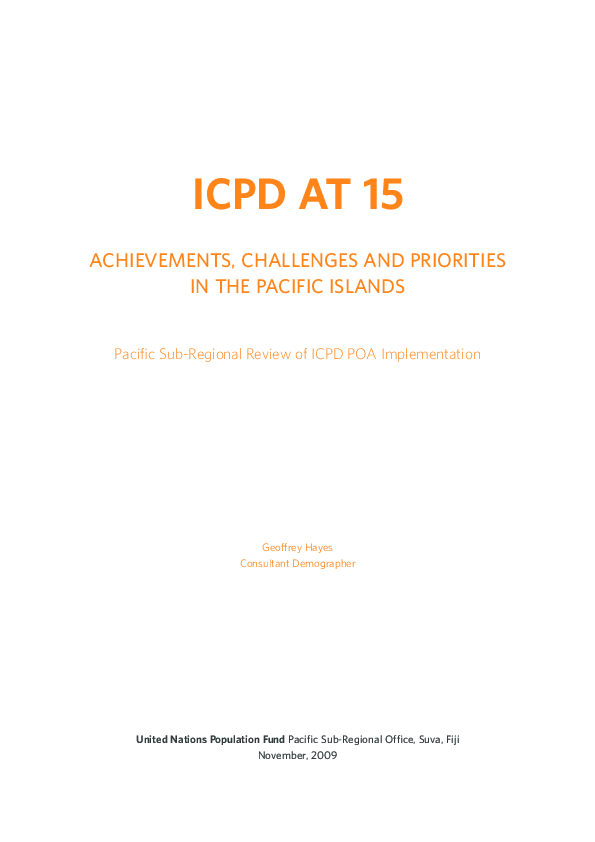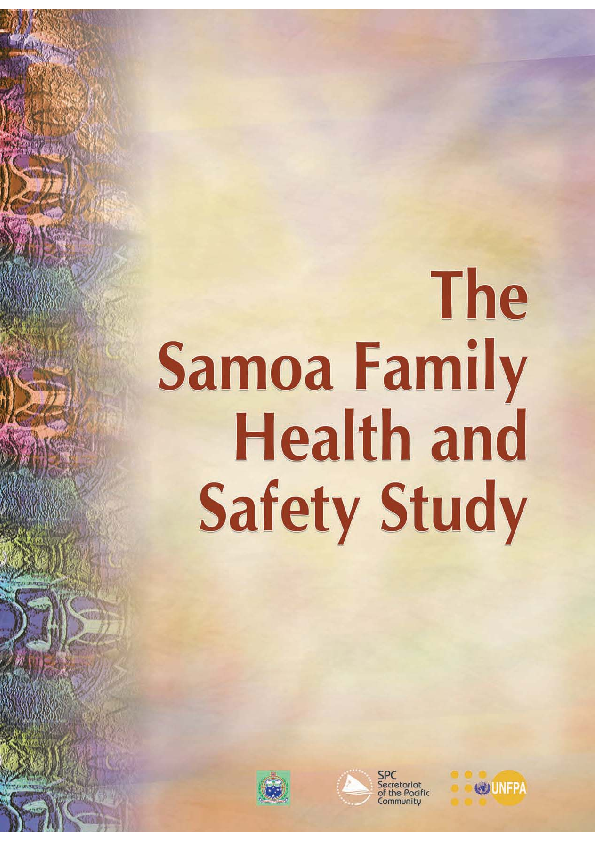You are here
New Releases

Population ageing in the Pacific Islands
Publication
This report provides the first overview of population ageing in the Pacific Islands both at the sub-regional level and in individual countries. The report also reviews the implications of population ageing for social welfare of the elderly and related policy issues that Island governments will face in the coming decades. The UNFPA intends to work with the countries, other international organizations, NGOs and civil society in the future researching these issues in greater detail and assisting the countries of the region to formulate appropriate policies and programmes in a timely manner.

ICPD at 15
Publications
There is much quantitative evidence that Pacific Island countries have made progress toward achieving the goals and objectives of the ICPD POA over the past 15 years, but the pace and extent of progress has varied greatly between countries. The countries that have reached or are on track to achieve the ICPD goals and MDGs relating to population are generally the smaller countries that retain a historical relationship with a former or current metropolitan power and/or have found opportunities to participate in overseas labourmarkets. For the most part these are the smaller countries of Polynesia and Micronesia, as well as Fiji.

The Samoa Family Health & Safety Study
Publication
The Samoa Family Health and Safety Study (SFHSS) is a component of the larger Pacific Multi-site Study of the Effects of Violence Against Women on Family Health and Safety, which is a joint research initiative of the Secretariat of the Pacific Community (SPC) and the United Nations Population Fund (UNFPA).
The Multi-site study follows the methodology of the World Health Organization (WHO) Multi- country Study of Women’s Health and DomesticViolence, and uses questionnaires based on those developed by WHO. The Pacific Multi-site Study was designed to:
• provide detailed information on the prevalence and frequency of different forms of violence in families (defined to include relationships between de facto partners);
• examine risk and protective factors at the household and community level;
• document the health and legal consequences of domestic violence;
• explore strategies and interventions used by victims, families, and communities; and
• assess the impact of attitudes on the preventionand intervention of violence